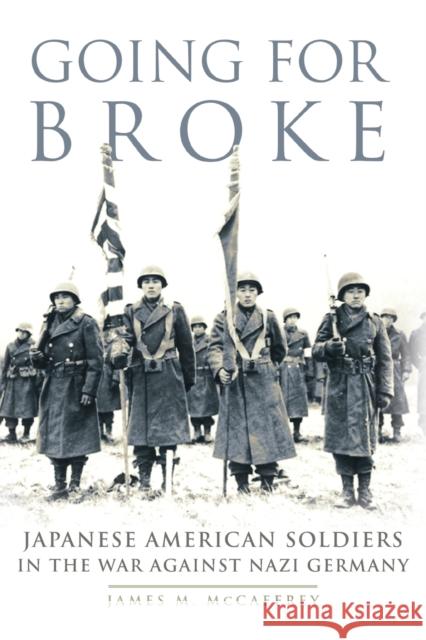Going for Broke: Japanese American Soldiers in the War against Nazi Germany » książka
Going for Broke: Japanese American Soldiers in the War against Nazi Germany
ISBN-13: 9780806159416 / Angielski / Miękka / 2017 / 428 str.
When Japanese forces attacked Pearl Harbor on December 7, 1941, Americans reacted with revulsion and horror. In the patriotic war fever that followed, thousands of volunteers--including Japanese Americans--rushed to military recruitment centers. Except for those in the Hawaii National Guard, who made up the 100th Infantry Battalion, the U.S. Army initially turned Japanese American prospects away. Then, as a result of anti-Japanese fearmongering on the West Coast, more than 100,000 Americans of Japanese descent were sent to confinement in inland "relocation centers." Most were natural-born citizens, their only "crime" their ethnicity.After the army eventually decided it would admit the second-generation Japanese American (Nisei) volunteers, it complemented the 100th Infantry Battalion by creating the 442nd Regimental Combat Team. This mostly Japanese American unit consisted of soldiers drafted before Pearl Harbor, volunteers from Hawaii, and even recruits from the relocation centers. In Going for Broke, historian James M. McCaffrey traces these men's experiences in World War II, from training to some of the deadliest combat in Europe.Weaving together the voices of numerous soldiers, McCaffrey tells of the men's frustrations and achievements on the U.S. mainland and abroad. Training in Mississippi, the recruits from Hawaii and the mainland have their first encounter with southern-style black-white segregation. Once in action, they helped push the Germans out of Italy and France. The 442nd would go on to become one of the most highly decorated units in the U.S. Army.McCaffrey's account makes clear that like other American soldiers in World War II, the Nisei relied on their personal determination, social values, and training to "go for broke"--to bet everything, even their lives. Ultimately, their bravery and patriotism in the face of prejudice advanced racial harmony and opportunities for Japanese Americans after the war.











